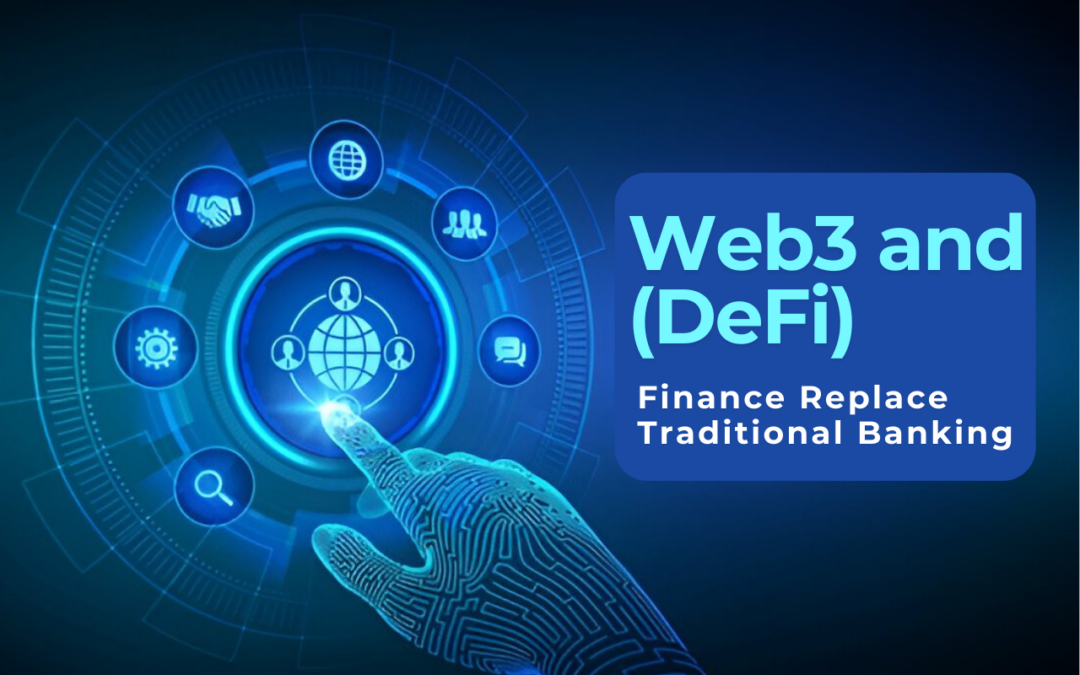The financial industry is undergoing a radical transformation. Web3 and Decentralized Finance (DeFi) are emerging as disruptive forces, challenging the long-standing dominance of traditional banks. But will they truly replace conventional banking, or will they coexist in a hybrid financial ecosystem?
This blog explores the rise of Web3 and DeFi, their potential to reshape banking, and the challenges that could hinder their mainstream adoption.
Understanding Web3 and DeFi
What is Web3?
Web3 represents the next evolution of the internet, emphasizing decentralization, blockchain technology, and user empowerment. Unlike Web2, where centralized entities control data, Web3 aims to distribute control across a network of participants, reducing reliance on intermediaries.
What is DeFi?
DeFi refers to a financial system built on blockchain technology that offers services like lending, borrowing, trading, and staking without traditional banks or intermediaries. Smart contracts, powered by blockchain networks like Ethereum, facilitate automated and trustless transactions.
Key Components of DeFi:
- Decentralized Exchanges (DEXs) – Platforms like Uniswap and SushiSwap allow users to trade digital assets without a central authority.
- Lending and Borrowing Protocols – Platforms like Aave and Compound enable users to lend and borrow funds without banks.
- Stablecoins – Cryptocurrencies like USDT, USDC, and DAI aim to maintain price stability, offering an alternative to fiat currencies.
- Yield Farming & Staking – Users can earn passive income by providing liquidity or participating in blockchain networks.
Traditional Banking vs. DeFi: A Real Comparison
1. Accessibility and Inclusion
Traditional banks require identity verification, credit scores, and geographical presence, leaving billions of people unbanked. DeFi, in contrast, allows anyone with internet access to participate in financial activities without barriers.
Advantage: DeFi promotes financial inclusion, especially in developing economies.
2. Costs and Fees
Banks charge high fees for transactions, foreign exchanges, and maintenance. DeFi eliminates intermediaries, significantly reducing costs.
Advantage: DeFi is cost-effective, with lower transaction fees compared to traditional banks.
3. Speed and Efficiency
Bank transactions, especially cross-border payments, can take days due to intermediaries. DeFi transactions, executed via smart contracts, settle within minutes.
Advantage: DeFi offers instant and borderless transactions.
4. Transparency and Trust
Banks operate in a closed system where customers have little insight into operations. DeFi runs on public blockchains, ensuring full transparency and trustless transactions.
Advantage: DeFi enhances financial transparency.
5. Security and Risks
Banks provide consumer protection, fraud prevention, and insurance. DeFi, despite its advantages, is prone to smart contract vulnerabilities, hacks, and lack of regulation.
Disadvantage: DeFi security concerns pose risks for mainstream adoption.
Can DeFi Completely Replace Traditional Banks?
Challenges DeFi Must Overcome
- Regulatory Uncertainty – Governments worldwide are yet to establish clear regulations for DeFi, which can limit adoption.
- Scalability Issues – Blockchains like Ethereum face congestion, leading to high gas fees and slow transaction speeds.
- Lack of Consumer Protections – Unlike banks, DeFi lacks insurance, fraud protection, and recourse for lost funds.
- Usability and Education – DeFi platforms are complex for non-technical users, requiring widespread education for adoption.
- Integration with Real-World Assets – Traditional banks facilitate mortgages, payroll, and other real-world financial services, which DeFi has yet to fully support.
Will Banks Adapt or Become Obsolete?
While DeFi is a powerful alternative, banks are unlikely to vanish. Instead, many financial institutions are already integrating blockchain technology to enhance efficiency and security. Central Bank Digital Currencies (CBDCs) and blockchain-based settlements are signs that traditional banks are evolving rather than becoming obsolete.
The Future: A Hybrid Financial Ecosystem? Rather than a complete takeover, a hybrid financial system may emerge where DeFi and traditional banking coexist.
1. Institutional Adoption of DeFi – Major banks and hedge funds are already exploring DeFi for yield generation and efficient cross-border payments. 2. Regulation-Backed DeFi Solutions – Governments may introduce regulated DeFi platforms to ensure security and compliance. 3. Integration of Fiat and Crypto Services – Banks might offer DeFi-based services alongside traditional financial products.
Conclusion: Evolution, Not Elimination
Web3 and DeFi are undoubtedly transforming finance, but traditional banks are unlikely to disappear completely. Instead, the future lies in a more decentralized and efficient financial landscape, where both systems work in tandem.
While DeFi offers unparalleled accessibility, transparency, and efficiency, it must overcome regulatory, security, and usability challenges before replacing banks entirely. The coming years will determine whether DeFi will complement or replace traditional banking, but one thing is certain: the financial world will never be the same again.
What do you think? Will DeFi completely replace traditional banking, or will banks adapt to the Web3 revolution? Drop your thoughts in the comments below!












